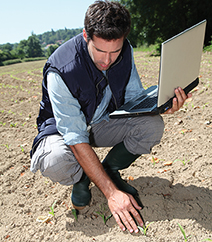Welcome to Blue Book!
Are you ready to join the thousands of companies who rely on Blue Book to drive smarter decisions? View our plans and get started today!
Still have questions? We’d love to show you what Blue Book can do for you. Drop us a line– we’ve been waiting for you.

“We had so much rain this year it created significant stress on our water management system,” confirms Mike Stuart, president of the Florida Fruit & Vegetable Association. “These extreme weather conditions can also exacerbate disease issues, making it even more difficult for growers.”
Brad Rippey, a meteorologist with the U.S. Department of Agriculture (USDA), explains: “Not only are we in a warming and wetter climate, but we’re also seeing a new cycle that features more sporadic precipitation that occurs in bursts.” These ‘bursts,’ which cause quick shifts from extreme drought to intense wet spells, can cause flooding (like seen in Texas) and drown out crops.
“Last year was devastatingly wet in Texas and onions were a total failure,” confirms Bret Erickson, president and CEO of the Texas International Produce Association. “The five to six years prior, we were in a horrible drought and water quality suffered as well.” Worse yet is the condition of the Lone Star State’s water system: “Our irrigation delivery systems are terribly outdated and antiquated,” he admits.
Unfortunately, such volatility and extremes seem to be the new normal—and weather experts are already talking about the next weather pattern, La Niña, and a return to drier conditions. “Almost always when we see a strong El Niño, it collapses in early summer and is followed by La Niña,” advises Rippey. “As we get later into the year, we may start seeing an overall drying trend for the United States, and California should indeed feel a fifth year of drought.”
The Heart of the Issue
If La Niña does cause the predicted drier conditions, California growers will suffer through another year of agricultural water cutbacks and miniscule allotments—making reliable water infrastructure and practical management policies even more crucial.
On average, the ag water supply California growers have used to provide the majority of the country’s fresh fruit, nuts, and vegetables has been cut by 70 percent during the drought.
“The real heart of what’s impacting San Joaquin Valley water is the Endangered Species Act and how harshly it is applied,” stresses Dave Puglia, executive vice president with Western Growers Association. “We’ve been on a downward water trajectory driven by policies, not drought. Many growers feel rain won’t matter. The surface water supplies that should come in wet years won’t because the regulatory policies have choked off those supplies.”
When the Endangered Species Act was passed by Congress in 1973 it’s hard to imagine its authors could have envisioned the dramatic impact it would have on growers. When the law was first challenged back in 1978, the U.S. Supreme Court found that “the plain intent of Congress in enacting [the Act] was to halt and reverse the trend toward species extinction…whatever the cost.”




